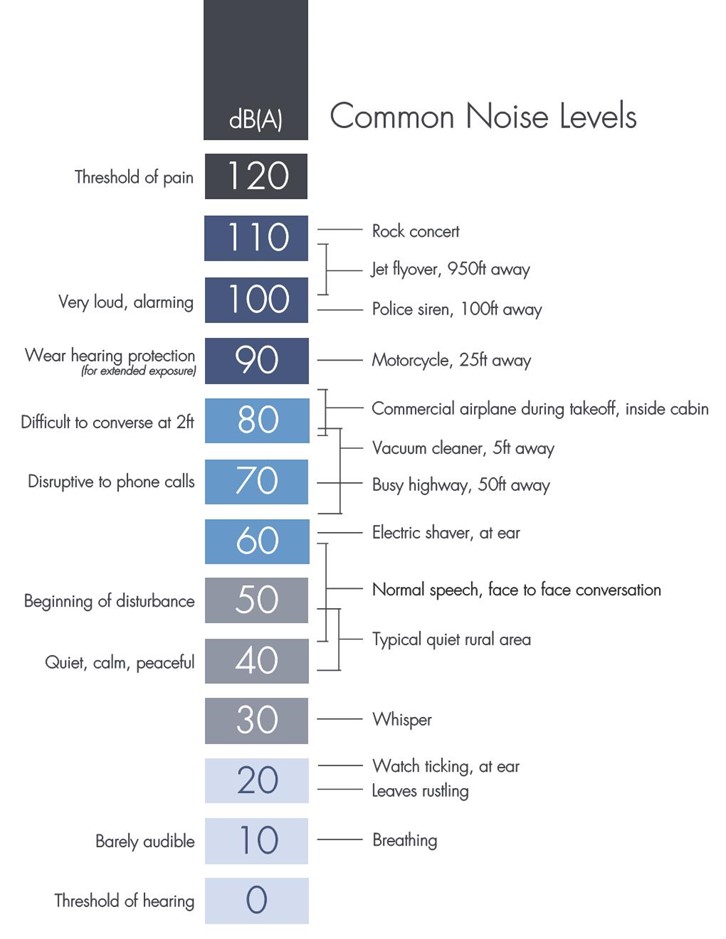Unwanted Sound
Although "unwanted" is a subjective term, some sounds are typically accepted as being noise. These include:
- Sound that interferes with one's hearing and comprehension of something, whether it's speech interference (conversation, safety, or teacher instruction), media or performance interference (listening to music or television), or other activity in which properly hearing the sound is essential.
- Sound that is too loud or lasts too long such that it causes hearing loss or other health problems.
- Sound that is disturbing – causing awakenings, disruption of concentration, or annoyance.
- Sound that has negative connotations for a product – in many cases sound is tied to the sense of quality in products ranging from automobiles to dishwashers.
There are three basic dimensions of sound, where each dimension can contribute to the perception of noise:
- Magnitude (volume)
- Frequency (pitch)
- Time (duration and variation).
Typically, noise is measured or predicted as a sound pressure level, reported in decibels (dB). The measurements and noise metric applied is application-dependent, where magnitude, frequency, and time can be accounted for differently with different noise metrics. As an example, highway traffic noise is measured and reported as the loudest hour (sound energy averaged for the hour) in a 24-hour period, with a frequency weighting applied to account for human perception of sound. Another example is occupational noise where the impact of noise on hearing loss is a primary concern. In this case both the level and duration of sound is integrated to provide an exposure level that can be related to the potential for hearing loss of workers exposed to the sound over the period of exposure.
Note that we typically examine sound from pressure disturbances (vibrating particles) in air or water (for marine life), but structures can also vibrate, causing adverse effects. For some applications, vibration levels are measured or predicted and reported with the applicable vibration metric.
Sound and vibration are intimately related. Any vibrating surface or structure can radiate sound, so measures taken to reduce vibration will often lead to a reduction in noise level. Examples of vibrating structures that radiate sound include engines, electric motors, many industrial machines, air conditioning or refrigeration compressors, exterior panels of dishwashers, and, of course, loudspeakers, which radiate sound on purpose.
The table below shows typical sound levels and human response for everyday sounds and noises. Where not otherwise indicated, the sound levels shown are intended to reflect those heard by the operator of the device.
Sound levels for common sound sources can be found at https://noiseawareness.org/info-center/common-noise-levels/
Here as some examples:

For more information about noise:
- The Toxic Effects of Noise and What We’re Doing About It
- National Council on Aging – Noise Guidelines
- Canadian Center for Occupational Health and Safety: Noise – Basic Information
- Medline Plus: Noise
- MedicineNet: What is Noise? Or What is Noise Pollution?
- Environmental Protection Department of Hong Kong: What is noise?
- US Federal Aviation Administration: Noise
- National Council on Aging – Noise Guidelines

